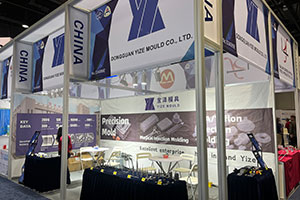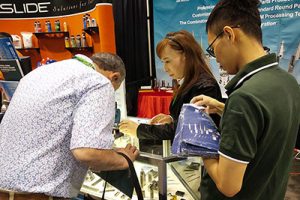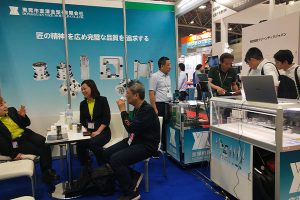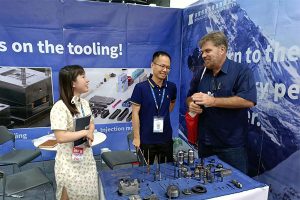Decoding Tungsten Carbide Hardness
I. Introduction: Tungsten Carbide – The “Hardcore” Workhorse of Manufacturing Tungsten carbide (cemented carbide), renowned for its exceptional hardness, wear resistance, and thermal stability, has become a cornerstone material in […]
I. Introduction: Tungsten Carbide – The “Hardcore” Workhorse of Manufacturing
Tungsten carbide (cemented carbide), renowned for its exceptional hardness, wear resistance, and thermal stability, has become a cornerstone material in industries such as cutting tools, mold manufacturing, and aerospace. Among its key performance indicators, hardness directly dictates its suitability for real-world applications. This article systematically explores tungsten carbide’s hardness through four dimensions: hardness standards, numerical ranges, influencing factors, and industrial applications, providing practical insights for manufacturers.
II. Tungsten Carbide Hardness: From Standards to Numerical Precision
Tungsten carbide hardness is typically measured using two internationally recognized standards: Rockwell Hardness (HRA/HRC) e Vickers Hardness (HV). The numerical values vary significantly across standards and are closely tied to application scenarios.
La nostra attività in fabbrica: parti in metallo duro, parti di stampi, stampi a iniezione medicali, stampi a iniezione di precisione, stampaggio a iniezione di teflon PFA, raccordi per tubi PFA. e-mail: [email protected],whatsapp:+8613302615729.
- Rockwell Hardness (HRA/HRC): The “Hardness Benchmark” for Cutting and Molding
- Common Ranges:
- Standard tungsten carbide: 89–95 HRA (equivalent to 69–81 HRC), suitable for most cutting tools.
- Ultra-hard tungsten carbide: Exceeds 95 HRA (approaching 85 HRC), ideal for high-precision machining.
- Application Differences:
- Cutting Tools: Require higher hardness (90+ HRA) to maintain edge sharpness and wear resistance.
- Mold Manufacturing: Demand a balance between hardness and toughness (85–90 HRA) to avoid brittle fracture.
- Common Ranges:
- Vickers Hardness (HV): The “Microscope” for Composition and Process
- Correlation with Composition:
- 12% tungsten carbide: 350–450 HV, suitable for general wear-resistant components.
- 18% tungsten carbide: 450–550 HV, optimized for high-load cutting.
- Process Enhancements:
- Rapid quenching: Achieves hardness above 700 HV, ideal for high-speed cutting tools.
- Ultra-hard tungsten carbide (18% tungsten): Up to 800 HV, used in precision mold manufacturing.
- Correlation with Composition:

III. The “Hidden Forces” Behind Tungsten Carbide Hardness: Composition, Structure, and Process
Tungsten carbide’s hardness is dynamically influenced by multiple factors:
- Composition: Tungsten as the “Genetic Code” of Hardness
- Higher tungsten content correlates with increased hardness (e.g., 18% tungsten carbide significantly harder than 12%).
- Cobalt additions enhance toughness but reduce hardness, requiring a trade-off between properties.
- Microstructure: The “Armor” of Dense Grains
- Fine, dense grain structures tighten atomic arrangements, enhancing resistance to external forces.
- Powder metallurgy processes control grain size to optimize hardness-toughness balance.
- Heat Treatment: The “Hardness Magic” of Quenching
- Quenching refines grains through rapid cooling, boosting hardness (e.g., from 500 HV to 700 HV).
- Tempering eliminates internal stresses, preventing brittle fracture and extending tool life.
IV. Industrial Applications of Tungsten Carbide Hardness: From “Hardcore” to “Versatile”
Tungsten carbide’s hardness drives its widespread adoption across industries:
- Cutting Tools Industry
- Tungsten carbide tools machine high-hardness materials (e.g., stainless steel, titanium alloys), improving efficiency and precision.
- Studio di caso: An automotive parts factory adopted 18% tungsten carbide tools, tripling tool lifespan.
- Mold Manufacturing Industry
- Tungsten carbide molds produce high-precision, long-lasting stamping and injection molds, reducing replacement costs.
- Studio di caso: An electronics manufacturer used tungsten carbide molds for smartphone cases, achieving a 99% yield rate.
- Industria aerospaziale
- Tungsten carbide components manufacture engine turbine blades, bearings, and other high-temperature parts, combining heat resistance and hardness.
- Studio di caso: An aerospace engine manufacturer adopted tungsten carbide turbine blades, raising operating temperatures to 1,200°C.
- Emerging Applications
- 3D-printed tungsten carbide parts: Enable complex mold structures, shortening R&D cycles.
- Nano-tungsten carbide coatings: Enhance tool wear resistance and reduce cutting forces.
V. Conclusion: The “Wisdom” of Choosing Tungsten Carbide Hardness
Tungsten carbide hardness is a dynamic equilibrium requiring integrated consideration of composition, structure, and process. In practical applications:
- Cutting Tools: Prioritize ultra-hard grades (90+ HRA) for wear resistance and sharpness.
- Mold Manufacturing: Balance hardness (85–90 HRA) and toughness to avoid brittle fracture.
- Aerospaziale: Select high-heat, high-hardness grades for extreme conditions.
Dongguan Yize Mould Co., Ltd. has specialized in hardmetal solutions for 16 years, offering full-cycle services from material selection, heat treatment optimization, to precision machining. For tungsten carbide hardness challenges, contact us at +86 13302615729 (WeChat/WhatsApp same number).






